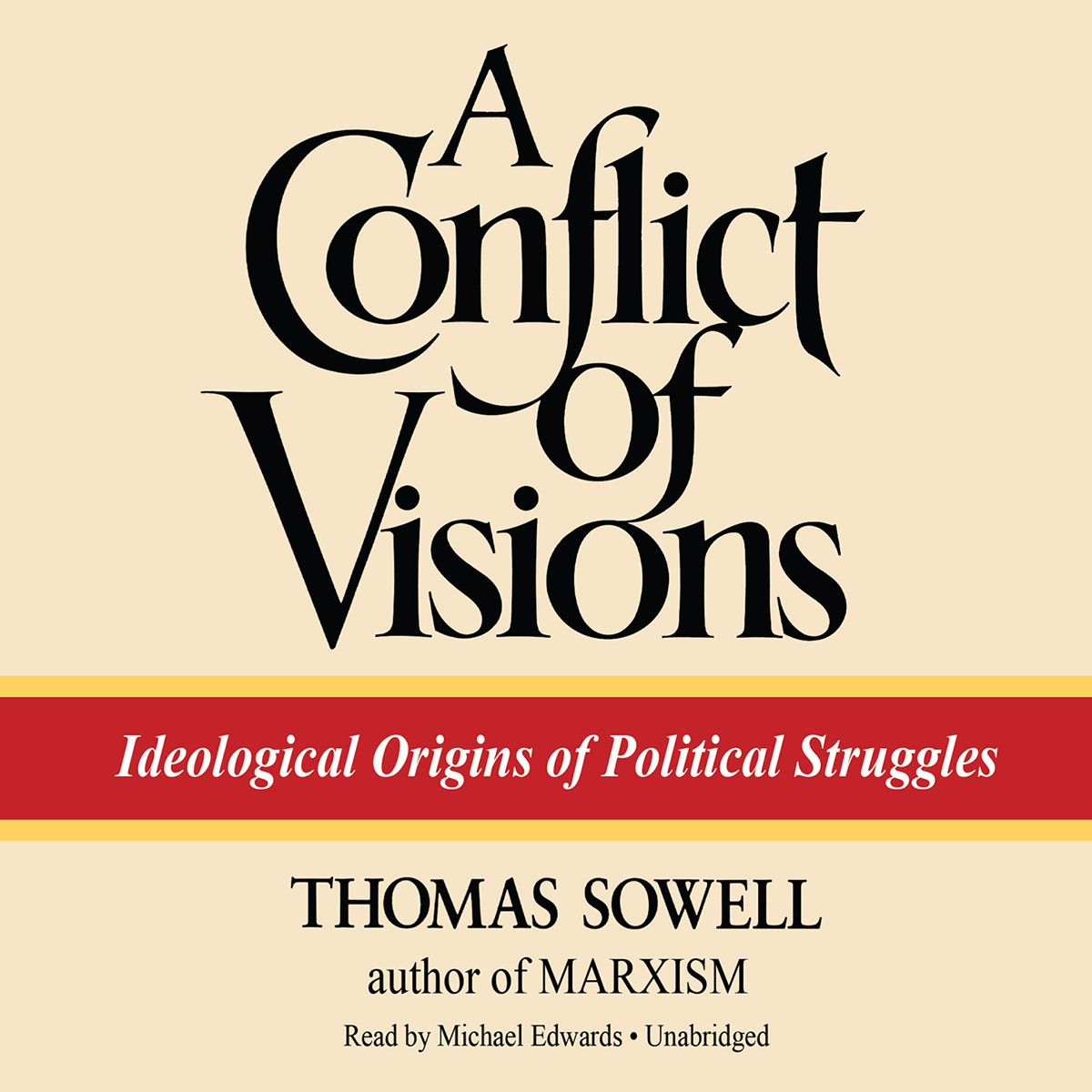Preface
In what has been described as a unusually non-polemical entry in his long list of works, in “A Conflict of Visions” Dr. Thomas Sowell sets out to describe two basic tendencies or “visions” in approach to the order and function of society, terming them the unconstrained vision and the constrained vision. It is the sort of work that will take me years, perhaps many years to follow through with. I review it here to try to allow it to further imprint itself on my mind.
(Disclaimer: this review is based upon a single “Working Man” hearing of the audiobook, often while operating heavy equipment. Coupling that with the fact that it’s a conceptual book, I could be off base here and there. I welcome corrections and improvements to whatever I say.)
Definitions
Visions are intuitive notions of what society is and how it should work. They are similar to Kuhnian scientific paradigms, but are not as explicit or falsifiable. In Sowell’s account, each instance of a vision of either tendency contains an order that can be made to fit much but not all of the evidence. Each is an approximation that holds different realities in tension. Many adherents believe the adherents of other visions think as they do against the weight of evidence, not realizing that each vision has a basically different way of ordering that evidence and dealing with the points of tension that develop from that order.
The Idea of Constraint
Contraints are the limits placed on society by the intellectual, moral, emotional, social, and spiritual nature of man. Nobody believes man is totally without limitation or devoid of capacity for growth — Sowell’s dichotomy, rather, is intended to show the meaningful differences created by the spectrum of assumptions about man. This is part of the Great Conversation that classical educators talk about: to what degree is man is born a “blank slate” (tabula rasa)?
“Unconstrained” Visions
Thinkers toward this end of the spectrum gravitate toward explict, articulated ideals of justice like “liberty, equality, and fraternity”. They believe the obstacles to realizing them are imposed by faulty social constructions that are removable, at some price. (In this context, Sowell quotes Rousseau: “Man is born free, and everywhere he is in chains.”) They treat existing structures as proposals equal to any others that may be made in pursuit of ideal justice. Faith in explicit reason and a lack of reverence for tradition translates to faith in and deference to each generation of intellectuals as potential saviors of society.
“Constrained” Visions
Thinkers in the “constrained” camp rely on the accumulation of mostly implicit wisdom embedded in traditional practices and systems. They believe tradeoffs are acceptable because they are unavoidable features of life in this world. When choosing tradeoffs, they prefer those that offer the most equity of process and freedom from interference to the individual. They do not think traditional orders are simply one choice among many on offer, but that each represents innumerable choices already made on the basis of knowledge gained by millions of individuals over thousands of years. They doubt the ability of experts to possess sufficient knowledge to make equally wise decisions, so, for this reason, they grant authority to decentralized processes like the free market rather than bureaucracies of experts.
Criticism across the gap
The unconstrained writers accuse those defending traditional practices of having no ideals and being defenders of inequitable status quos and special interests.
Thinkers of the constrained vision believe abstract ideals like those pursued by the unconstrained vision are unrealistic because they are unnatural. They frown on their pursuit because they are not only ultimately unattainable, but costly and destructive of much good along the way.
Conclusion
There really is more within this book than I can review now: Sowell quotes many Enlightenment revolutionary and anti-revolutionary writers in such a way that entices one to read political philosophy. There really is a lot at stake and what he has to say really deserves our attention.
At the end of this book’s preface, Sowell says, “We will do almost anything for our visions, except think about them. The purpose of this book is to help us think about them.” I think the book suceeds. He sheds light without taking a side, which should help people of all persuasions learn to better recognize the nature and limits of their commitments. I look forward with the keenest anticipation to learning to better understand what he has taught me in this book.
